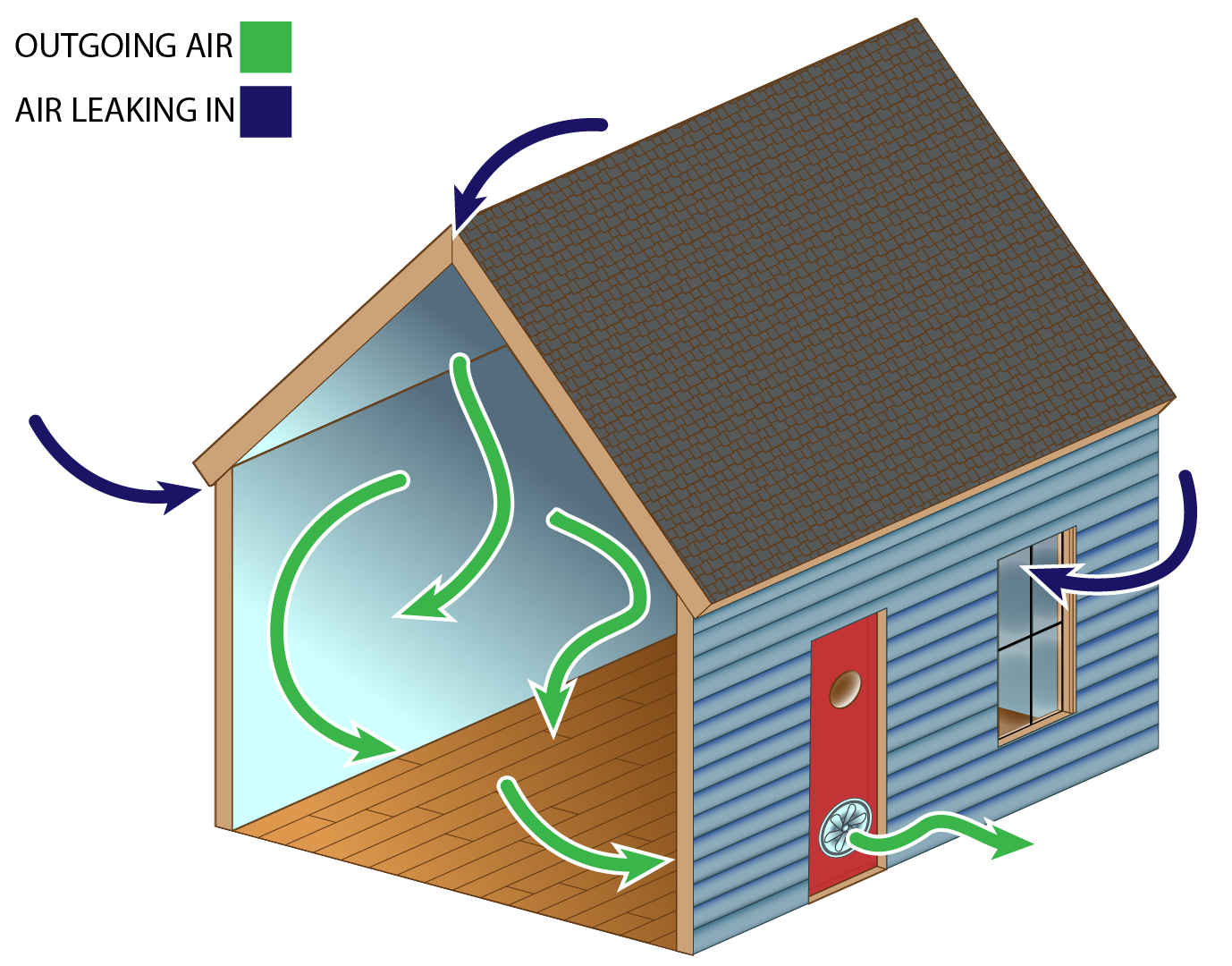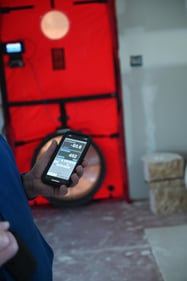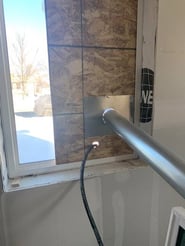Have you ever felt a draft even when all the windows are closed or noticed dust seemingly appearing out of nowhere? These could be signs of hidden air leaks in your home, affecting your comfort, energy bills, and health. But how do you pinpoint these silent saboteurs? Enter the blower door test, a powerful tool that sheds light on your home's airtightness.
 |
| *although they can be measured by pressurizing the home as well, ask your HERS rater which type will work best for you |
In colder climates, Blower Door tests are typically performed by depressurizing the home and measuring the amount of air that leaks back in*
All exterior openings like doors and windows are closed or sealed off, and a temporary door with a fan is installed.
This high-powered fan creates pressure differences between the inside and outside of your house, mimicking the natural air exchange throughout the day caused by a 20 mph wind. Special instruments then measure the air creeping through cracks, gaps, and other unintentional openings. Thermal imaging may be used to find the sources of these leaks so they can be fixed.
So when should I test?
 Blower door tests are often done near the end of the building process when the paint is done and the final doors and windows are in place. At this stage, you will get an accurate measure of how airtight your home is, but correcting any problem areas will be much more time-consuming.
Blower door tests are often done near the end of the building process when the paint is done and the final doors and windows are in place. At this stage, you will get an accurate measure of how airtight your home is, but correcting any problem areas will be much more time-consuming.
While there is some added difficulty in early testing, as you need to seal off any exterior openings like doorways or windows, fixing problems as soon as they crop up is more efficient.
 In 2021, Enercept did a blower door test on a Habitat for Humanity duplex under construction in Watertown, SD, using Enercept SIP wall panels. The outside temperature was minus 11 degrees F, and the units were heated with a temporary heat source that was vented through a board over a window opening.
In 2021, Enercept did a blower door test on a Habitat for Humanity duplex under construction in Watertown, SD, using Enercept SIP wall panels. The outside temperature was minus 11 degrees F, and the units were heated with a temporary heat source that was vented through a board over a window opening.
Our first line of business was to seal up the openings for the doors that had yet to be installed. We did this with poly and painter's tape. We got a good enough seal on them to depressurize the home, and the fun began! We toured the unit with thermal imaging, looking for cold spots, and we found some:
 |
 |
 |
Equipped with this information, our local Habitat for Humanity chapter had the information they needed to seal these homes better to make them more efficient and comfortable for the new homeowners.
We tested again when the duplex was sealed and finished the trim, stairwells, and utility closet. Doing the blower door test at the end of the building process is a great time to find your final numbers.
In many regions, blower door tests are mandatory for new construction projects, ensuring compliance with energy efficiency standards. This is a good thing! For builders, blower door tests provide valuable insights into construction quality, highlighting areas for improvement and leading to better-built homes in the future.
Remember, a blower door test isn't just about numbers on a report or meeting code requirements; it's about unlocking the full potential of your home. Take control of your comfort, energy bills, and indoor air quality, and breathe easy, knowing your home is performing at its best!
Want to learn more?
Check out these related videos on our YouTube channel!
|
A high-performance SIP building enclosure often allows smaller HVAC equipment to be specified. Proper HVAC sizing is crucial to an Enercept home because an oversized HVAC system will fail to reach the steady operating rate the equipment was designed for. |
Professional energy assessors use blower door tests to help determine a home's airtightness. Doing blower door tests at different construction stages can help diagnose air infiltration issues, allowing them to be fixed before the interior finishes have been completed. |











